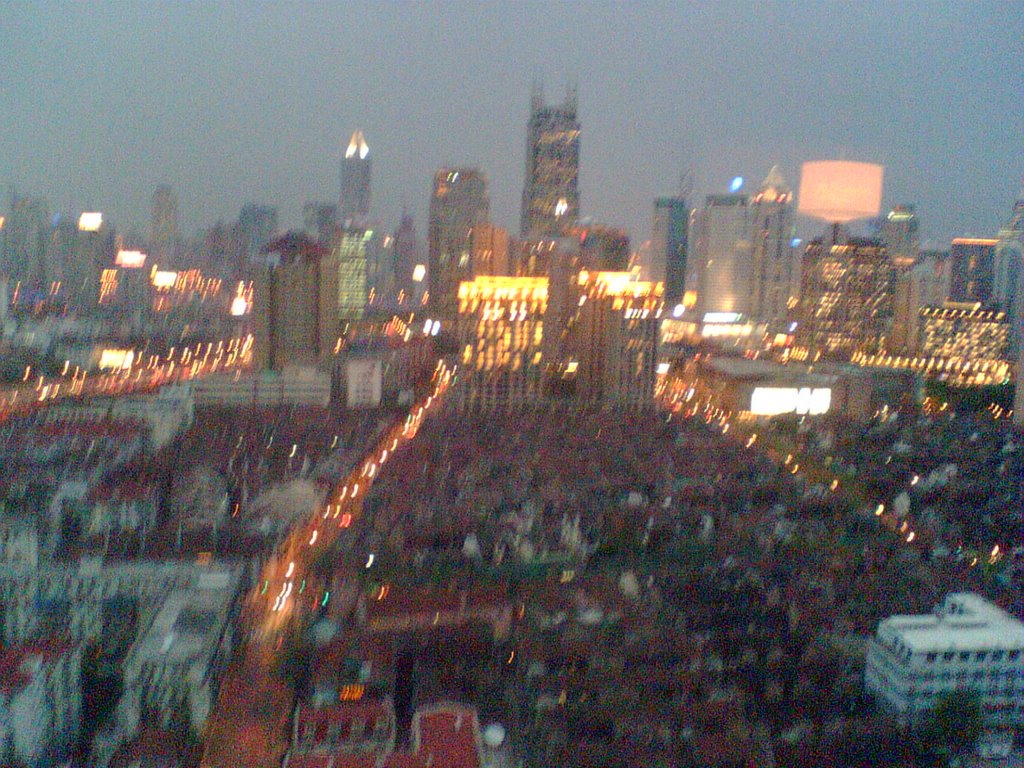HAMACHAN TONKATSU HOUSE
March, 2008
And so as I sat in the humming, streamlined reception area of the URBN Hotel on Jiaozhou Rd. (near Beijing Rd.), Shanghai’s latest - and arguably coolest - boutique hotel, I looked out through the floor to ceiling windows with some amusement as I remembered a meeting there only six months prior when the owners pointed to a shell of an old wire factory and told me: this will be the lobby area, and we’ll be opening by Christmas. My friend was late for our meeting, and as I perused the drinks menu I noted the confidence of the thick beige paper, the lettering, and the pricing. The waiter gave me a sideways glance as I told him that I would wait for my friend, and handed him back the menu. With a flip of his moody coif he set it back down in front of me and glided away. Even the waiters are more confident these days.
At precisely ten minutes late my friend called to tell me that he would meet me across the street at a little Japanese tonkatsu place called Hamachan. There’s no English sign, he told me, but look for some Japanese writing on the painted window, right next to a video shop. This was already going in a direction I like: a real best kept secret. Walking out of URBN’s lobby I noted the newness of it, like an expensive haircut – confident, styled, chic. Conversely, I wondered what was in store for me at my friend’s hole in the wall Japanese place across the street.
It’s a good thing that he mentioned the video shop, because I walked past Hamachan twice, each time thinking that the door wasn’t in use, as a derelict or under construction building might look. But walking two doors down there was the video shop, and so I circled back and looked at the squiggly lettering on the opaque window and tried the door. Sure enough it opened into a small, dimly lit room, with around twenty humble seats. As I stepped up and shut the door behind me, I had the distinct feeling that I halted a few conversations in mid-sentence. If there had been a juke box it would have stopped. The two waitresses looked at me, looked at each other and then, just a moment too late bleated out their memorized Japanese greeting. Of course I’ve had this kind of reaction many times in
Hamachan looks like it has been around since at least the forties (without renovation), and is certainly a no-frills affair, with its basic wood chairs, plastic table cloths, and old Japanese pin-up girl posters. In fact it looks like an old
But the food! This is real, authentic Japanese tonkatsu style. A line of ceramic piggy dolls along the window let’s you know that the main fare on the very limited menu is pork. In fact, of the six main choices five are pork and one is eel. The pork comes breaded and deep fried, or in variations like lean, fat, or sautéed in ginger, and always comes with cabbage, miso soup, pickles, and unlimited rice. If you want extra soup or cabbage it’s 5 RMB. The barbecue sauce is brown and tangy, and at an average of 55 RMB, you could do a lot worse in this town. The eel is the most expensive at 80 RMB, and is a huge piece of fish broiled expertly in a thick, tartly sweet sauce. The other pork offering is curry pork over rice. One of the best offerings on the menu is the cold bean curd, which is soft but at a perfect texture, and comes slathered in spring onions. After a good dousing with soy sauce, this dish is simply sublime, and large enough for two to share. Other small dishes are kimchi, cooked lotus root, tomato carpaccio, soybean paste, and bizarrely, Camembert cheese.
Hamachan knows what it does, and does it well. The food is served confidently, and my friend, who lived in
HAMACHAN RESTAURANT: Daily 6 p.m.-10 p.m.
Like all the best kept secrets, you will have to find it for yourself!
It’s on

No comments:
Post a Comment